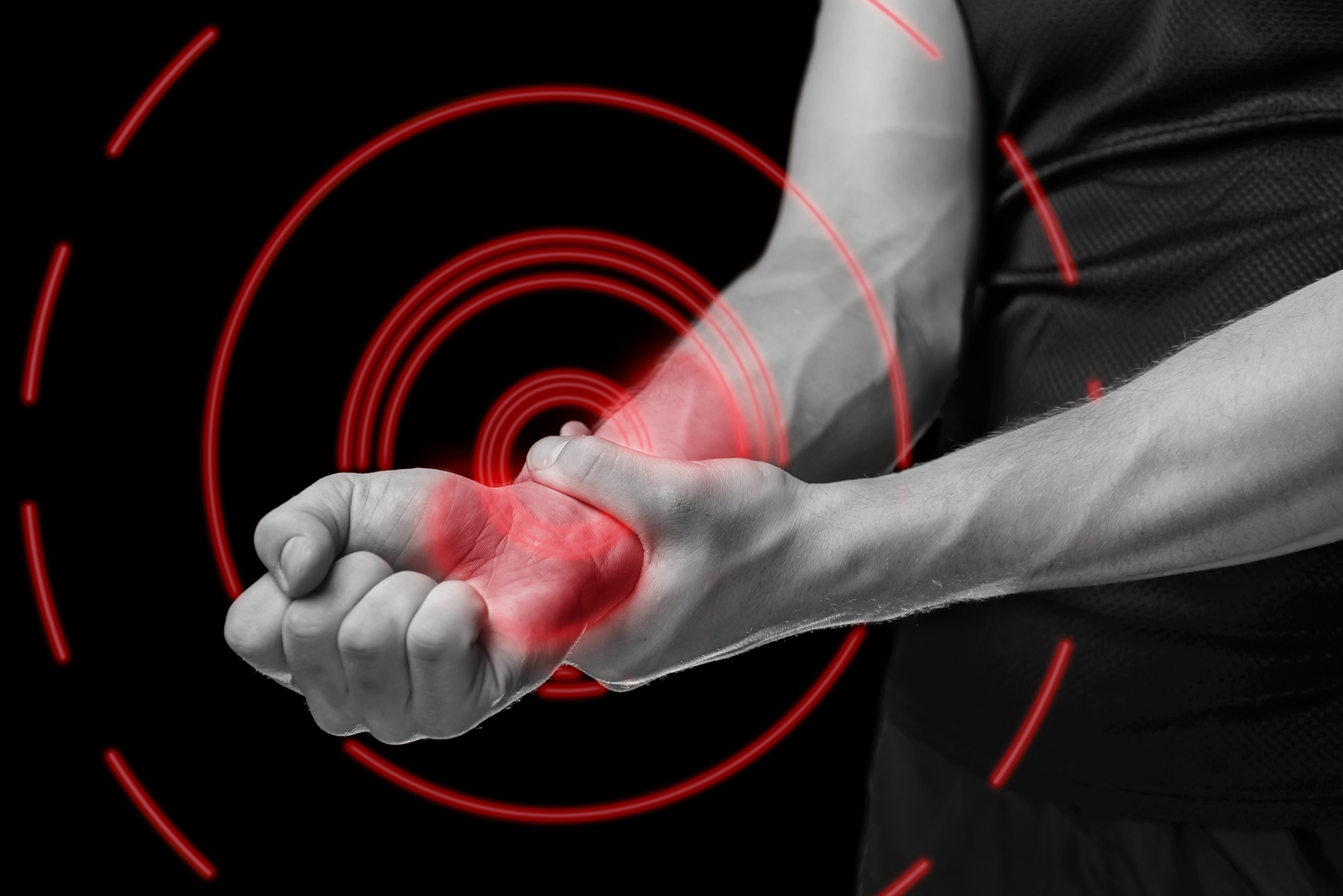What causes carpal tunnel syndrome?
 The general explanations for the causes of carpal tunnel syndrome are:
The general explanations for the causes of carpal tunnel syndrome are:
Minor changes occur in the tendons and/or other structures going through the carpal tunnel. This may cause an increase in pressure within the tunnel. The increase in pressure is thought to compress and restrict the blood supply to the median nerve. As a result, the function of the median nerve is affected causing the symptoms.
It’s thought that your genes may play a part. The chances of experiencing Carpal Tunnel Syndrome increase if other family members have it. But this could be due to environmental and not genetic reasons.
Bone or arthritic conditions of the wrist such as rheumatoid arthritis or wrist fractures may lead to carpal tunnel syndrome.
Various other conditions are associated with carpal tunnel syndrome. For example: pregnancy, obesity, an underactive thyroid, diabetes, the menopause, other rare diseases, and a side-effect of some medicines. Some of these conditions cause water retention which may affect the wrist and cause carpal tunnel syndrome.
Rare causes also include cysts, growths, and swellings coming from the tendons or blood vessels passing through the carpal tunnel.
What are the normal treatment options for carpal tunnel syndrome?
General measures
Not over-using your wrist by excessive squeezing, gripping, wringing, etc. Painkillers are sometimes prescribed to ease the pain. If the condition is part of a more general medical condition, such as arthritis then treatment of that condition may help. Overweight patients with Carpal Tunnel Syndrome are often advised to lose weight to improve their symptoms.
These seem to be quite sensible measures, although pain killers are just treating the symptoms and not dealing with the cause of the problem and are known to have side effects.
Not treating may be an option
In up to 1 in 4 cases the symptoms go without treatment within a year or so. About 2 in 3 cases that develop during pregnancy subside after the baby is born. So, not treating is an option, particularly if symptoms are mild. The situation can be reviewed if symptoms get worse.
It is true that many conditions subside without treatment, for most however, this isn’t a viable option.w more Patient.co.uk vide
A wrist splint
A removable wrist splint is often advised as a first active treatment. The aim of the splint is to keep the wrist in a neutral position without applying any force over the carpal tunnel so as to rest the nerve.
Whilst this may take pressure off the wrist, again it is not dealing with the cause of the problem.
A steroid injection
An injection of corticosteroids into, or near to, the carpal tunnel is an option.
Whilst this may ease the symptoms in some cases, again it is just treating the symptoms and not getting to the root cause. Research trials indicate that symptoms return in some people the year following steroid injections. Other studies report variable success rates with steroid injections.
Another downside of steroid injections is that they inhibit the synthesis of proteins, collagen, and Proteoglycans. The net effect of corticosteroids is inhibition of fibroblast production of collagen, ground substance, and angiogenesis. The result is weakened synovial joints, supporting structures, articular cartilage, ligaments, and tendons. This can make the pain worse, which is often treated with more steroid injections.
Surgery
An operation can be performed by cutting the ligament over the front of the wrist to ease the pressure in the carpal tunnel to give your nerve more space. It is usually done under local anaesthetic. There are two main types of surgery – open and keyhole.
The downsides are that you will not be able to use your hand for work for a few weeks after the operation and a small scar will remain on the front of the wrist.
There is also a risk of complications from the surgery. These include a very small risk of infection, damage to the nerve or blood vessels and a return of carpal tunnel syndrome as the cause of the problem has not been addressed.
Other treatments
Over the years, a wide range of other treatments has been advocated. For example, controlled cold therapy, ice therapy, laser therapy and exercises. None of these treatments has good research evidence to support its use and so they are not commonly advised. However, they can work for some people. There is some evidence that acupuncture may work for some people.
Steroid tablets may ease symptoms in some cases. However, there is a risk of serious side-effects (see above) from taking a long course of steroid tablets.
Cold therapy, ice and laser therapies can help in the short-term, but not long term solutions. They are merely treating the bit that hurts.
Stay tuned for Part 3, when I will give you an insight into my views and how I recently worked with a client with Carpal Tunnel Syndrome.
Until next time…

